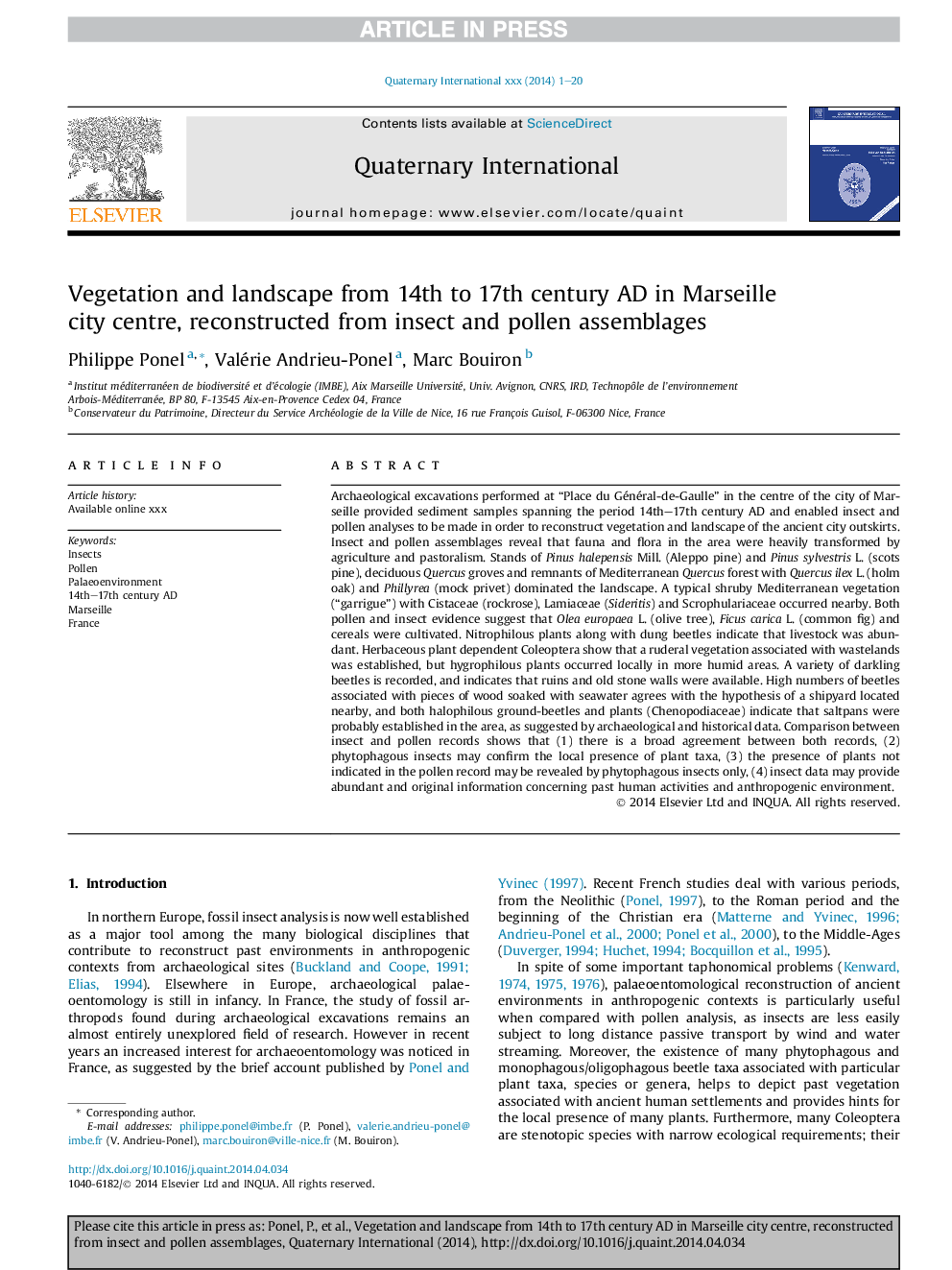| کد مقاله | کد نشریه | سال انتشار | مقاله انگلیسی | نسخه تمام متن |
|---|---|---|---|---|
| 7452259 | 1484155 | 2014 | 20 صفحه PDF | دانلود رایگان |
عنوان انگلیسی مقاله ISI
Vegetation and landscape from 14th to 17th century AD in Marseille city centre, reconstructed from insect and pollen assemblages
ترجمه فارسی عنوان
پوشش گیاهی و چشم انداز از قرن 14 تا 17 میلادی در مرکز شهر مارسی بازسازی شده از مجموعه های حشرات و گرده
دانلود مقاله + سفارش ترجمه
دانلود مقاله ISI انگلیسی
رایگان برای ایرانیان
کلمات کلیدی
موضوعات مرتبط
مهندسی و علوم پایه
علوم زمین و سیارات
زمین شناسی
چکیده انگلیسی
Archaeological excavations performed at “Place du Général-de-Gaulle” in the centre of the city of Marseille provided sediment samples spanning the period 14th-17th century AD and enabled insect and pollen analyses to be made in order to reconstruct vegetation and landscape of the ancient city outskirts. Insect and pollen assemblages reveal that fauna and flora in the area were heavily transformed by agriculture and pastoralism. Stands of Pinus halepensis Mill. (Aleppo pine) and Pinus sylvestris L. (scots pine), deciduous Quercus groves and remnants of Mediterranean Quercus forest with Quercus ilex L. (holm oak) and Phillyrea (mock privet) dominated the landscape. A typical shruby Mediterranean vegetation (“garrigue”) with Cistaceae (rockrose), Lamiaceae (Sideritis) and Scrophulariaceae occurred nearby. Both pollen and insect evidence suggest that Olea europaea L. (olive tree), Ficus carica L. (common fig) and cereals were cultivated. Nitrophilous plants along with dung beetles indicate that livestock was abundant. Herbaceous plant dependent Coleoptera show that a ruderal vegetation associated with wastelands was established, but hygrophilous plants occurred locally in more humid areas. A variety of darkling beetles is recorded, and indicates that ruins and old stone walls were available. High numbers of beetles associated with pieces of wood soaked with seawater agrees with the hypothesis of a shipyard located nearby, and both halophilous ground-beetles and plants (Chenopodiaceae) indicate that saltpans were probably established in the area, as suggested by archaeological and historical data. Comparison between insect and pollen records shows that (1) there is a broad agreement between both records, (2) phytophagous insects may confirm the local presence of plant taxa, (3) the presence of plants not indicated in the pollen record may be revealed by phytophagous insects only, (4) insect data may provide abundant and original information concerning past human activities and anthropogenic environment.
ناشر
Database: Elsevier - ScienceDirect (ساینس دایرکت)
Journal: Quaternary International - Volume 341, 18 August 2014, Pages 152-171
Journal: Quaternary International - Volume 341, 18 August 2014, Pages 152-171
نویسندگان
Philippe Ponel, Valérie Andrieu-Ponel, Marc Bouiron,
